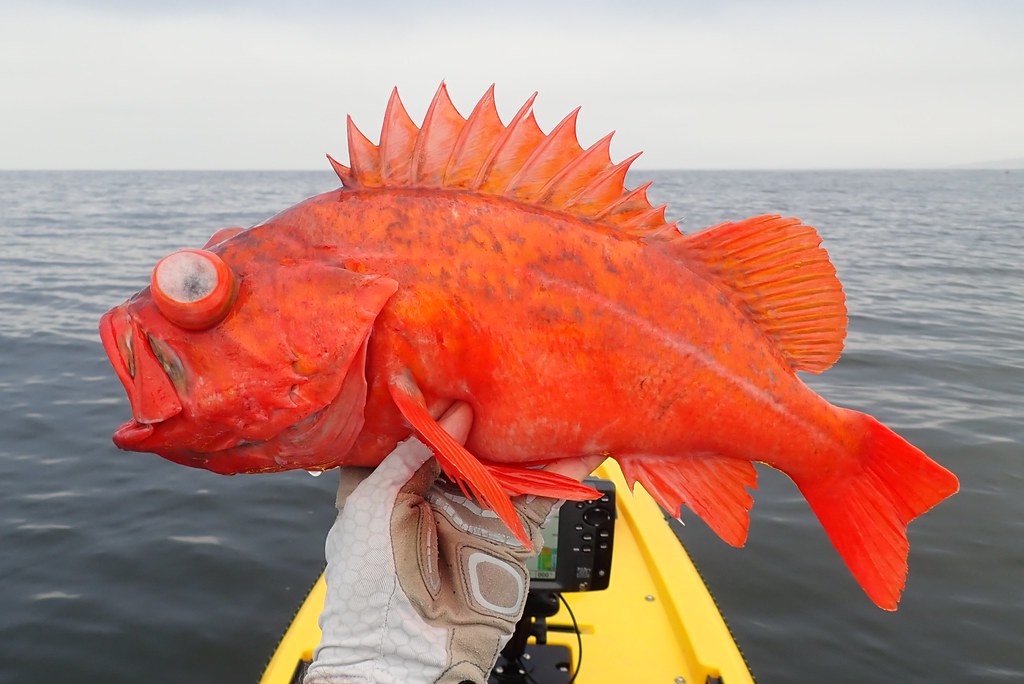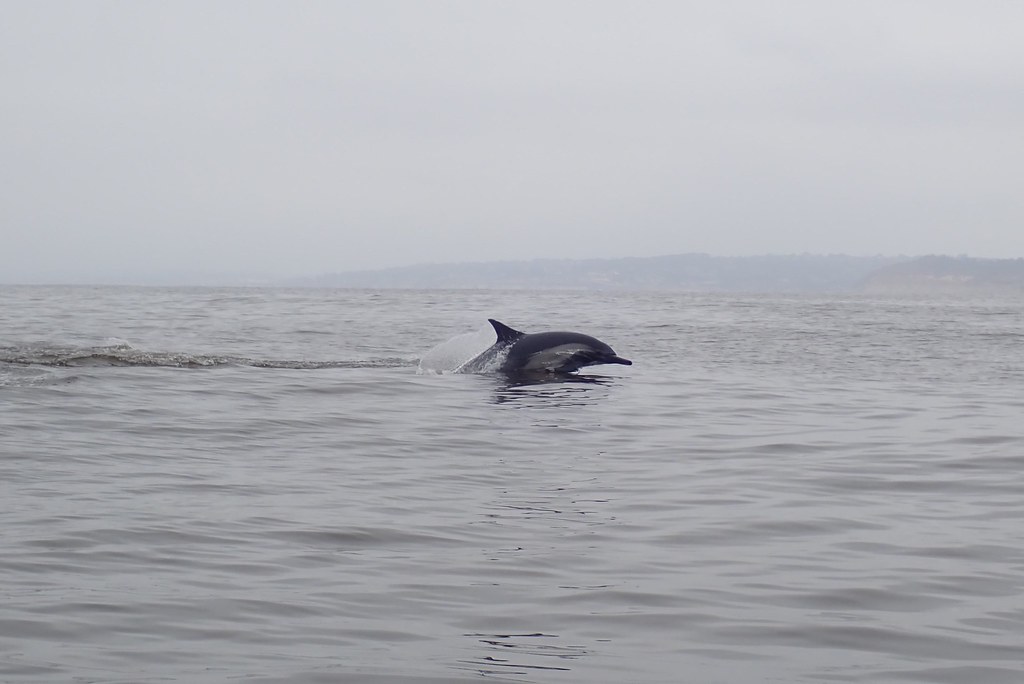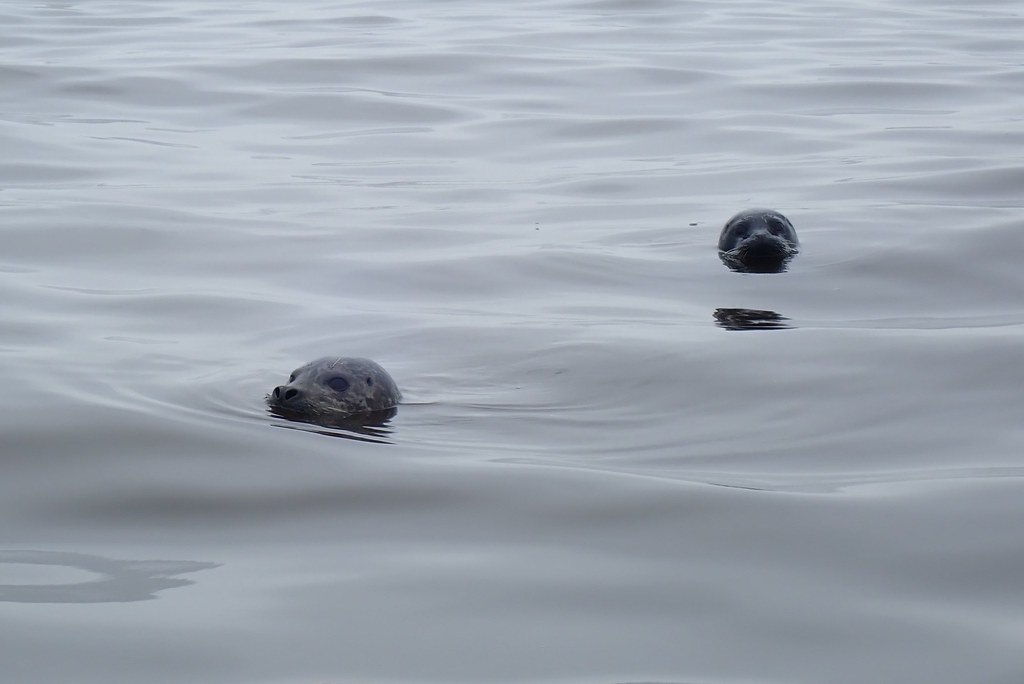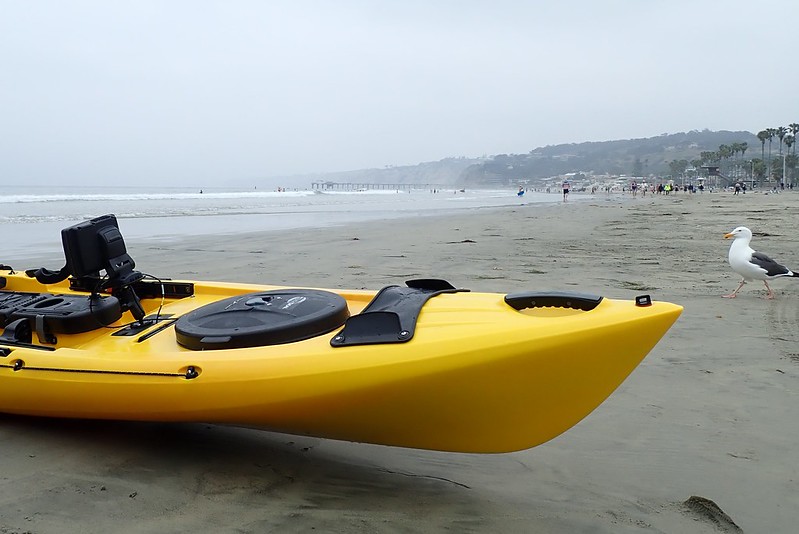At this point I can confidently say I have bottom fishing from the kayak figured out. It's been good for adding to the lifelist and filling the freezer, but it's time that I start challenging myself with other ways of fishing the ocean. There have been reports of yellowtail, bonito, and barracuda showing up, so I decided to spend a day trolling lures. I launched from La Jolla at sunrise and paddled west until I passed the kelp. For the rest of the day I trolled a Rapala Xrap Magnum 15 on one rod and a Magnum 20 on the other. The red tide has mostly cleared up, but the visibility was still very low, around two feet several miles offshore. I didn't notice any marks on the fish finder in the top 30 feet of water, so it wasn't surprising that I didn't get a bite all day. It's a good thing I enjoy the exercise! To avoid being skunked I fished the seamount west of La Jolla for a few minutes and caught some rockfish - squarespots, blues, and vermilions. This squarespot in particular was a huge improvement over the one on my lifelist.
Squarespot Rockfish (Sebastes hopkinsi)

Blue Rockfish (Sebastes mystinus)

Other than the rockfish my only catch for the day was a mackerel. As I was paddling back to the kelp I ran into one of my neighbors. I've seen him driving past my house with his boat countless times, and we often chat about fishing, but this if the first time I've run into him on the water. Right as I showed up one of his rods bent over hard, and I hung around for a while to see what was on the end of his line. To their and my surprise it was a medium sized sevengill shark!

I added a deck mounted compass to my kayak, and this was my first time using it. You can see a few straight segments on my route where I maintained a heading for a few miles. I'll probably never actually need the compass, but it's a good backup in case my electronics fail on a day where I'm far from shore and dense fog rolls in. You never know!

Miles: 13.37
Hours: 6:39
Water Temp: 65 F
Next week I have a rudder kit arriving, so this was my last rudderless trip in the Trident. I'm feeling pretty confident with my long distance training, but I think the rudder will up my game even more for covering long distances in open water.
May 30, 2020
Ok sorry, I lied. The rudder kit did come last week, but after looking over the instructions I decided it would be best if a kayak shop did the install. OEX will be open in June, so I'll have it on sometime in the coming month! Yesterday I got out to La Jolla again, and I was able to meet up with Anthony, another kayak angler from http://www.bigwatersedge.com/. We were on the fence as to whether or not we should go out with the wind and swell forecast, but on Friday we made the call that conditions were good enough and we'd make the most of it.

We both wanted to troll and jig for yellowtail, but I asked Anthony if we could load up on rockfish first. I've been giving away a lot of the vacuum sealed fillets in my freezer to friends, and I wanted to restock my supply. We dropped in the usual spot along the edge of the canyon and were quickly pulling up rockfish from the bottom.
Greenspotted Rockfish (Sebastes chlorostictus)

Between the two of us we tried a variety of different jigs. I used a 5.3 oz knife jig with a single assist hook at the top and an 8 oz glow jig with treble hook at the bottom. Anthony used a big flatfall with an assist hook at the bottom as well as a few others. They all produced fish, but I put a piece of shrimp on the hook for most of my drops, so I can't really conclude which jig style was the best.

I caught my limit of 10 rockfish with 9 of them being sunsets. The two biggest ones were 3 lbs and 3.5 lbs. The freezer will once again be well stocked! I feel very fortunate given everything that's going on this year that I can get out and source my own food and share with friends.
Sunset Rockfish (Sebastes crocotulus)

While I was switching my gear over for trolling, Anthony hooked into something big. I stopped what I was doing to see what he pulled up. After several minutes of cranking, he got whatever it was to color. We saw something large and brown, but then his line went slack and the fish disappeared from view. The hook had come out! We were pretty sure it was a big halibut, and it's a bummer we didn't land it, because it would have been the fish of the day.
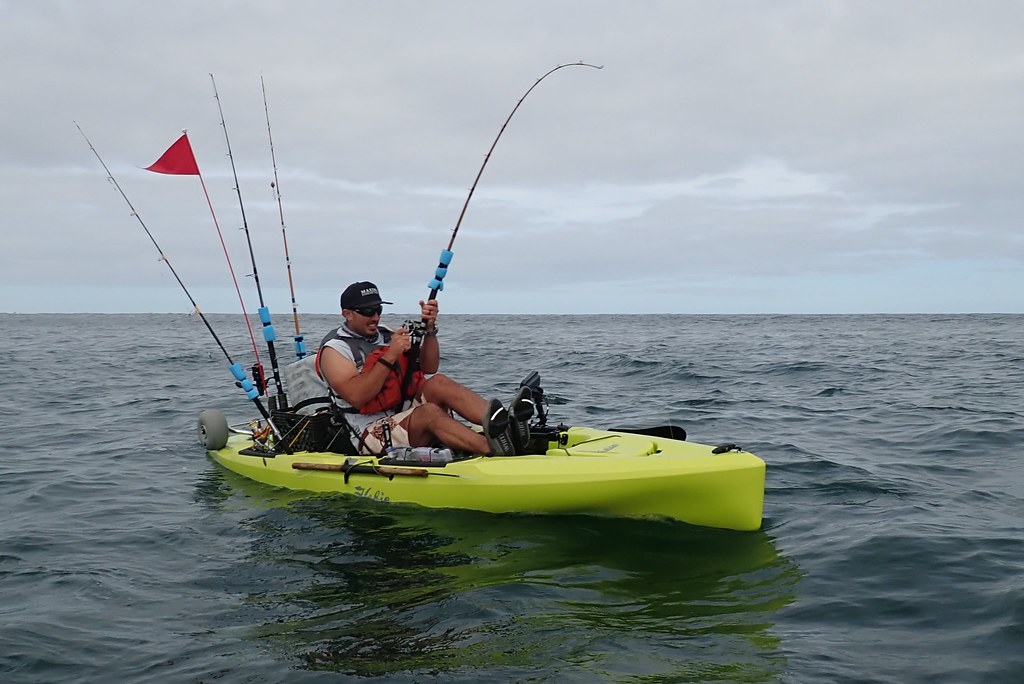
Anthony fell for the same temptation that I do on many of my trips, and that's to spend most of the time bottom fishing despite having other targets. While he finished rockfish hunting I spent a little time trolling a big lure around, but it didn't get any hits.

Miles: 9.29
Hours: 5:56
Water Temp: 64 F
Overall it was a good day. We agreed that the rough wind and swell conditions were good practice and a good reminder to take the forecast seriously. We didn't make any progress on yellowtail, but we got out there and caught some fish. Next time we'll leave the rockfish gear at home.

